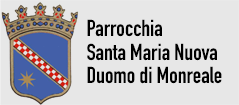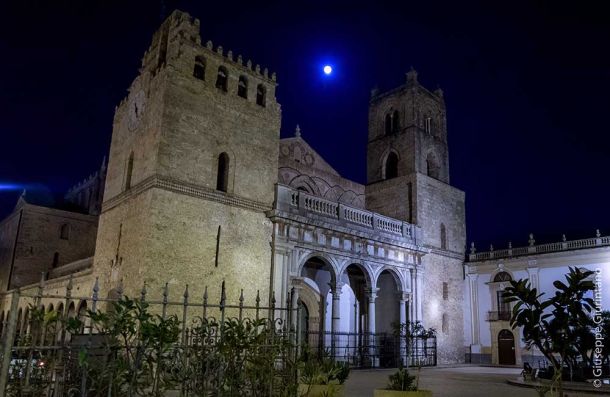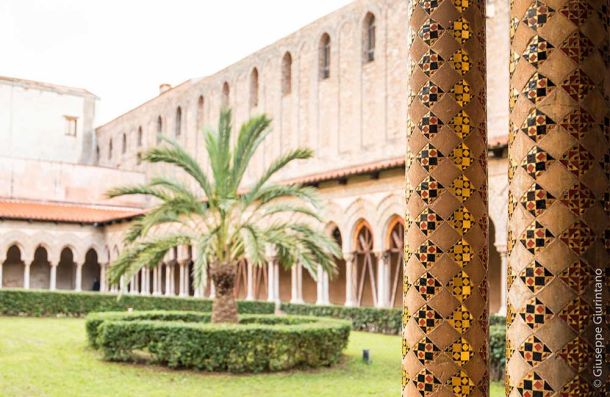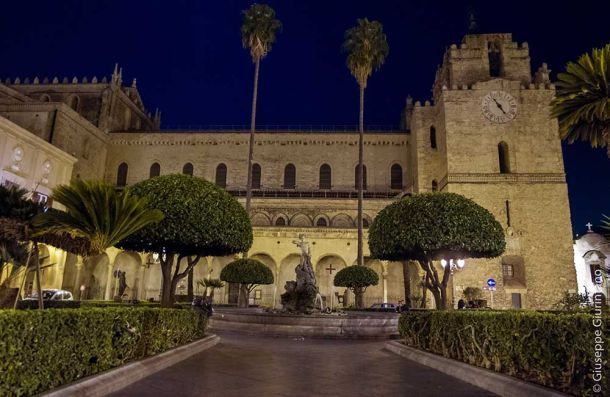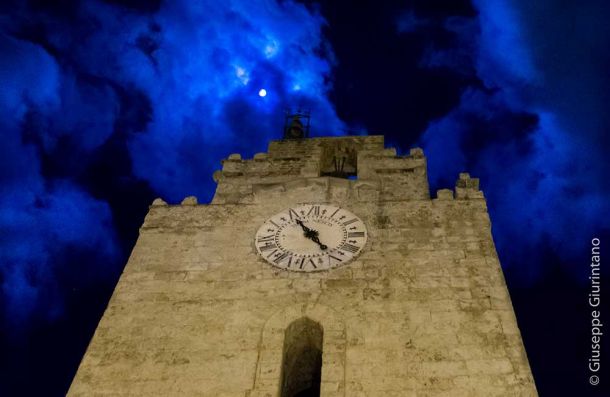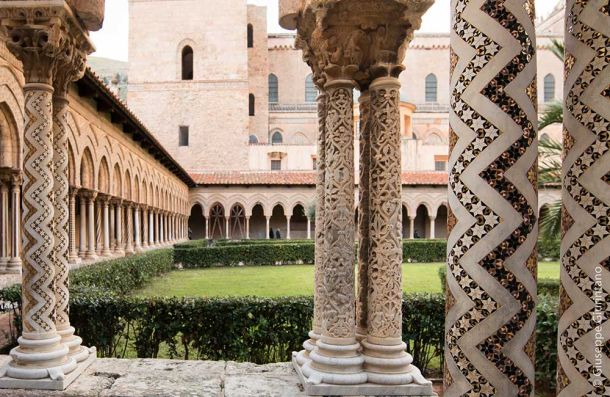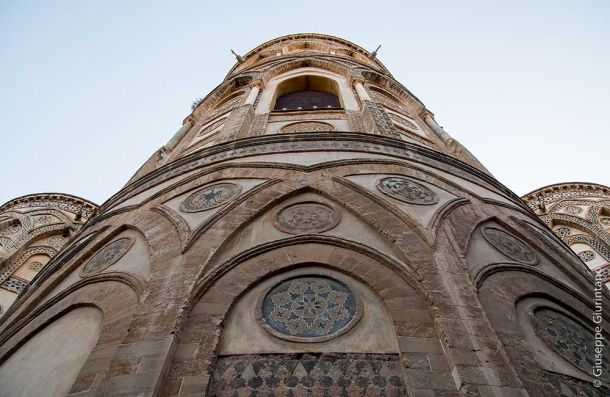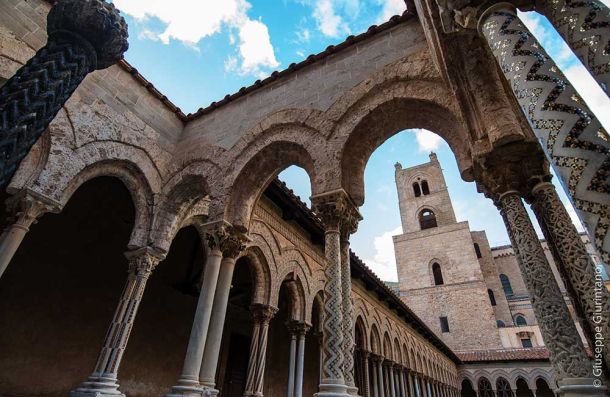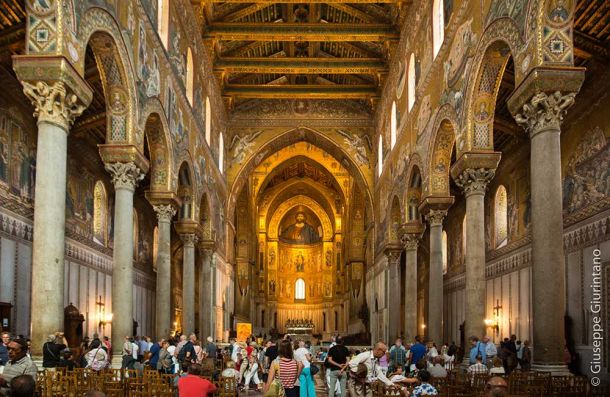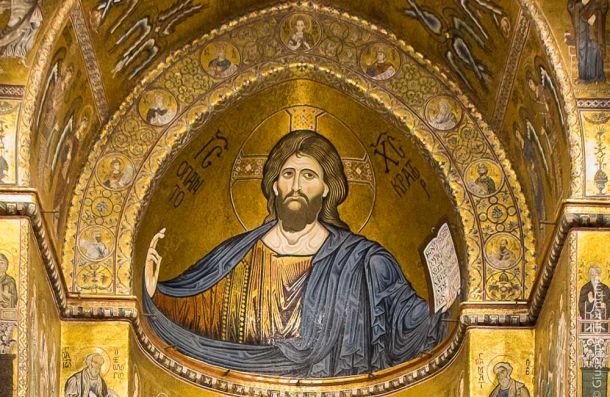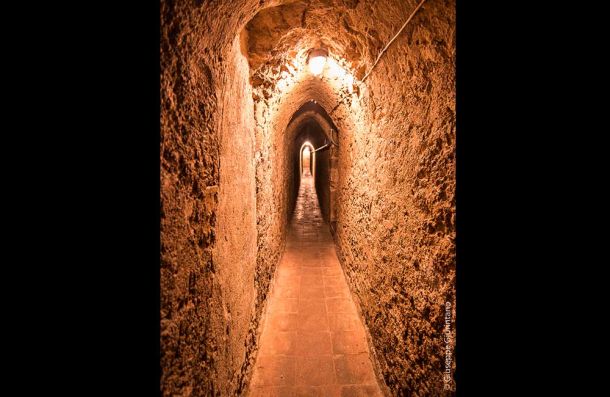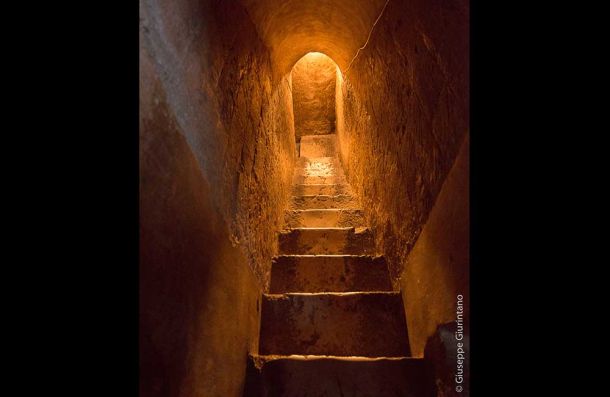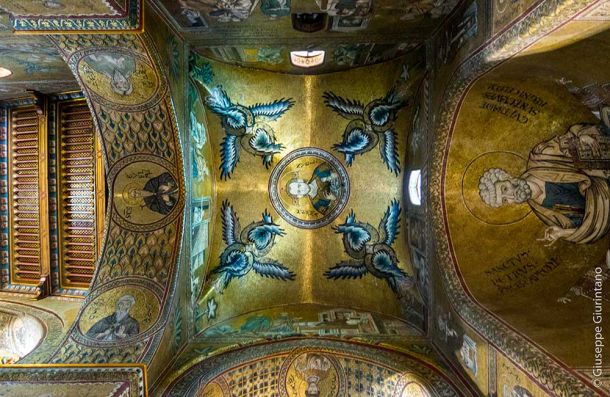
Cathedral of Monreale
n 1172, the last Norman King, William II, nicknamed The Good, decided to build an abbey complex on a promontory of Monte Caputo to entrust to the monks of San Benedetto. The entire complex was dedicated to the Mother of God with the title Santa Maria Nuova.
The most significant construction of the complex is the abbey cathedral. It is a wonderful example of Byzantine - Norman or Sicilian-Norman art.
Sicilian Masters worked on the construction, as they were already skilled in the art of mosaics, along with artists from Constantinople. The Benedictine monks added their contribution, who just four years after the laying of the first stone already dwelt in the abbey.
The main facade of the Cathedral is made of two imposing towers that embrace the portico in Doric-Tuscan style, which replaces the sixteenth-century original portico that had collapsed.
There are 6400 square metres of mosaics, composed with colour and gold glasswork. The walls narrate: the Stories of Genesis in the nave; the Gospels in the transept and the smaller naves; the central apse has clear references to the Book of the Apocalypse. The smaller apses - diaconikon and the prothesis - offer the stories of the Apostles Peter and Paul.
The cathedral has undergone two major interventions. The first was in 1658 when, in compliance with the provisions of the Council of Trent, the "walls" that separated the naves from the sanctuary were demolished, where the monastic choir was. At this time the magnificent ambo was also demolished.
The second intervention in 1811 came after a fire devastated the Cathedral, particularly the transept. A restoration campaign conducted between 1812 and 1850 completely restored the Cathedral in its every part, as we can see it today.
In the south transept are the sepulchres of the Norman monarchs William I, called "the Wicked", and William II, called "the Good." In the northern part of the Cathedral are those of Queen Margaret of Navarre, the wife of "the Wicked" and the two graves of Henry and Roger, her sons who died at a very young age.
Works of great artistic and religious value can be admired in the Cathedral. The Porta Maggiore, work of Bonanno Pisano of 1186, are the largest bronze doors of the middle ages. The largest altar is completely in silver and narrates the life of the Madonna, in the Roman style work of Luigi Valadier. The precious icon of Constantinople origin, the XII century Mother of God Hodegetria, recently returned to the cathedral's interior.
n the north transept the only coeval floor of the foundation can be observed, with its thick slabs of marble covered with precious inlays of mosaic tesserea of marble and glasswork, in some areas even gold. The baroque chapel built by Spanish Archbishop Roano in 1690 can be accessed from this area, a wonderful example of art with intermixed marble.
It is possible to admire the sacred furnishings and vestments in use at the Cathedral inside the Diocesan Museum, which can be accessed from the right transept.
A visit to the terraces of the cathedral lets one grasp the magnitude of the entire abbey complex, the last work of the magnificent Norman Age.
Open hours
Catedral
From Monday to Saturday:
09.00 - 13.00 (last entrance 12.45)
14.00 - 17.00 (last entrance 16.45)
Sunday:
14.00 - 17.00 (last entrance)
Where
Duomo di Monreale
Tour operator
Make a reservation
To make a reservation, click on the link below and fill out the form.
Make a reservationSchools
Make a reservation
To make a reservation, click on the link below and fill out the form.
Make a reservation




